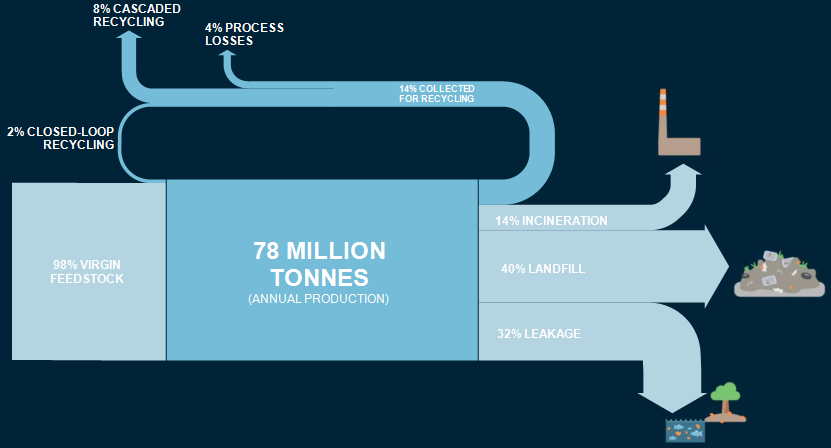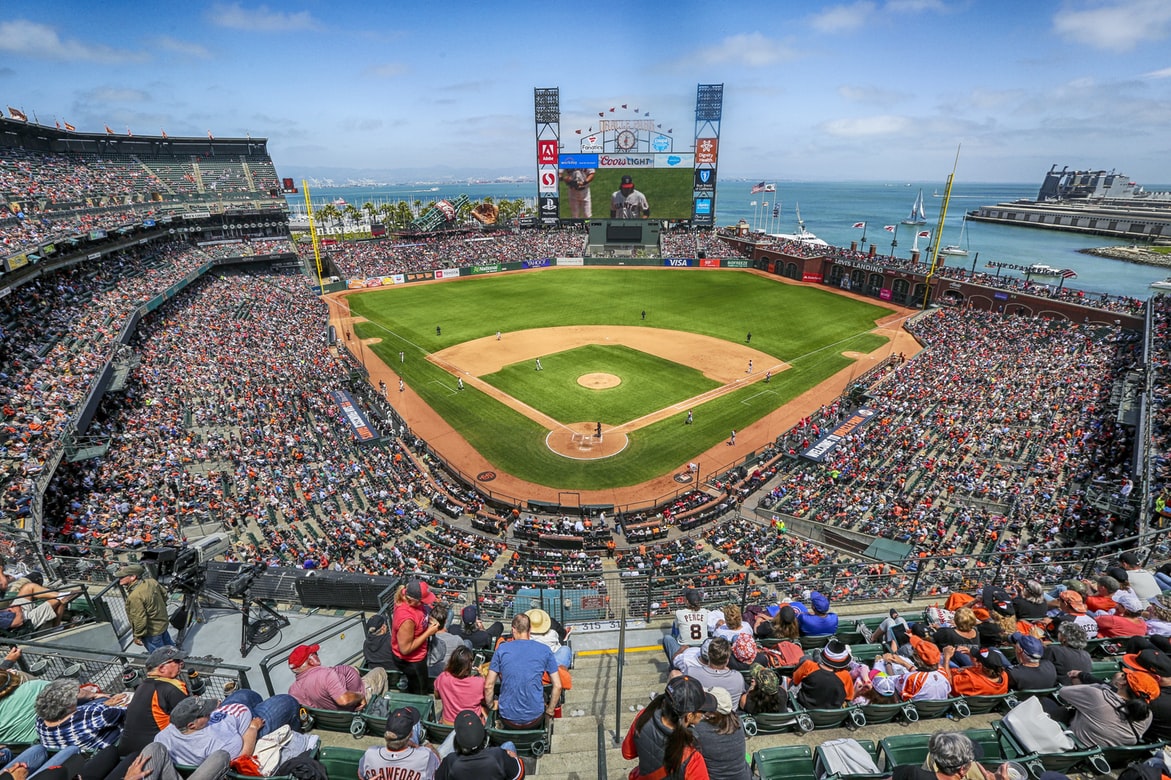We’ve said it before, and we’ll say it again. The amount of single-use plastic packaging produced every year is mind blowing… 78 million tons annually. That’s 156,000,000,000 pounds, or the weight of about 1.9 million Boeing 747s – still lost in the math, that’s about 14 times the weight of The Great Pyramid of Giza.


What is the fate of all this single-use plastic packaging? Most is sent to landfills or incinerated. Only 32% is leaked into the environment where it pollutes ecosystems and waterways and will slowly break down into microplastic fragments which persist for hundreds of years. Those little microplastics find their way back to us in many ways – it is estimated that humans consume a credit card-sized amount of plastic EVERY WEEK – and there is still much uncertainty regarding the effects of persistent plastic particles in the environment. So, what happens to the rest of the single-use plastic packaging? Sadly, only 2% is effectively close-loop recycled… that’s right 2%.

Sustainability and Stadiums
When you’re at your favorite sporting event odds are you’re not thinking sustainability – You’re probably cheering on your team and wondering how it’s possible that a hotdog costs $8. What might surprise you is that while you’re enjoying your time in that folding seat, there are people out of sight working to make stadium and concessions operations more sustainable between every pitch, dunk, and touchdown.

In a September article in the Sports Business Journal, Bret McCormick dives into the future of sporting venues and how sustainability initiatives are taking precedent and making a difference. We’re going to dive into Bret’s insight and add some of our own. The article is available here in its entirety.
Let’s start with the potential impact of reducing waste at sporting events. “Sports can play a visible role in promoting and enacting sustainability practices, and concessions in particular has potential for immediate impact. To understand the volume, consider that the average U.S. Bank Stadium crowd in Minneapolis produces 35 tons of waste, or that the Miami Dolphins are eliminating, annually, an estimated 812,000 plastic bottles and 613,000 plastic cups from public use.”
Several states have banned food waste from being sent to landfills, others have banned single-use plastic checkout bags, and in some areas producers of food waste are required to compost based on the amount of waste generated. The large events hosted by sporting venues present tremendous opportunities to reduce the amount of food waste sent to landfills, as well as decrease the total waste they generate. Less food going to landfills means less emitted methane, which acts as a much more potent greenhouse gas than carbon dioxide.
“Most sports venues have the potential to be closed loops — customers don’t bring food in or take it out, unlike a restaurant — increasing the likelihood that composting and recycling succeed.”
Sustainable Concessions, Less Waste
The opportunity to control what packaging comes in and is served to fans allows venues and concessionaires to control their waste streams. Eliminating single-use packaging such as condiment packets, trays, straws, and cups is just the beginning of the new age of sustainability in sporting events. Now it’s not uncommon for venues go above and beyond, replacing disposable cups and cutlery with recyclable and compostable alternatives. Many even send food waste to composting facilities. Consider: “The Vikings diverted 91% of waste during the 2018 Super Bowl at U.S. Bank Stadium, and they’ve maintained an 80% average since. The remaining waste that isn’t diverted is converted to steam at a trash-to-energy facility and is used to heat buildings in downtown Minneapolis.” Or “The Washington Nationals are avoiding using 5 million ketchup packets this season, while the Golden State Warriors receive all their ingredients at Chase Center in reusable containers. Concessionaires have the reach to play an oversized role, too; Delaware North is now making straws available only upon request in venues it serves, while Aramark helped the Philadelphia Eagles switch to recyclable straws, eliminating 500,000 plastic straws annually from Lincoln Financial Field.” Read more examples of teams leading the way in sustainability here.

Seasons Change
Today there are organizations like the Green Sports Alliance (GSA) pushing sustainability in sports to new heights. Currently there are 194 teams and 195 venues across 16 different leagues dedicated to advancing sustainability in sports.
“The Green Sports Alliance leverages the cultural and market influence of sports to promote healthy, sustainable communities where people live and play. The GSA inspires professional sports leagues, sports governing bodies, colleges, teams, venues, their partners and millions of fans to embrace renewable energy, healthy food, recycling, water efficiency, safer chemicals and other environmentally preferable practices.” – Green Sports Alliance

Alongside organizations like the GSA are producers of sustainable products and packaging such as NatureWorks and Natur-Tec. These companies dedicate their research and products to providing sustainable solutions to the challenges faced by brands and organizations pursuing sustainability and waste reduction. Together, bioplastics producers and venues alike are working to make every sporting event more sustainable while still delivering fans the fun and exciting experiences they crave.
Sustainability is the way of the future for businesses, manufacturers, and even sports venues. Consumers demand it, legislation requires it, and at the end of the day we only have one planet, so it is up to all of us to take care of it. The rise of sustainable and closed-loop operations within sporting venues and concessionaires has resulted in tremendous progress reducing waste from single-use packaging and food waste, but there is much work to be done. Luckily for us (and the planet) there are many people and organizations working hard behind the scenes to pioneer sustainability at stadiums all over the world.

“This is not something we’re doing out of convenience or to save money… It is at great cost and great effort. It is something we believe is the right thing to do because we love our town, we love where we are, and we’re going to take care of it.”
—Geoffrey Stiles | Atlanta Hawks’ senior vice president of facilities and events
